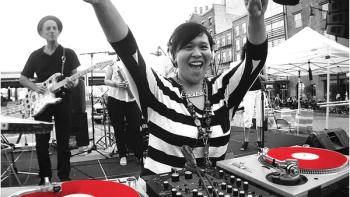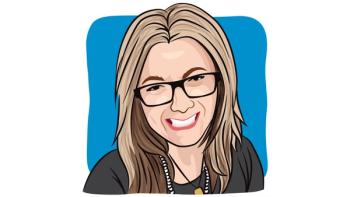
CAR-T Cell Therapy Highly Effective in Acute Lymphoblastic Leukemia
CTL019, a CAR T-cell therapy, had a high response rate for young patients with relapsed/refractory ALL in a recent phase 2 study.
According to findings from the global phase 2 ELIANA study, CTL019, a CAR T-cell therapy, had an 82 percent complete remission (CR) or CR with incomplete blood count recovery (Cri) rate for pediatric and young adult patients who had relapsed/refractory B-cell acute lymphoblastic leukemia (ALL).
The phase 2 study enrolled patients at 25 centers in the United States, Europe, Asia and Australia. In the first 50 patients enrolled, the CR rate was 68 percent and the CRi rate was 14 percent. All patients with a CR/CRi also tested negative for minimal residual disease. The six-month overall survival rate was 89 percent and the disease-free survival rate was 60 percent.
"There was high efficacy, with the primary endpoint met. All complete remissions were MRD-negative and durable," said lead investigator Stephan Grupp, M.D., Ph.D., the Yetta Deitch Novotny Professor of Pediatrics at the Perelman School of Medicine at the University of Pennsylvania. "These global multicenter trial data build on earlier encouraging research conducted at a single trial site, and advance the case for CTL019 as a potential treatment for children and young adults with relapsed or refractory B-cell ALL.”
Novartis, the company developing the CAR T-cell therapy, plans to submit regulatory applications to the FDA and European Medicines Agency (EMA) for CTL019 as a treatment for pediatric and young adult patients with relapsed/refractory B-cell ALL, based on findings from ELIANA. The company expects to complete the submissions in early 2017.
"We are committed to advancing CTL019 and look forward to working closely with the FDA and EMA in the coming months," Bruno Strigini, CEO, Novartis Oncology, said in a statement. "This first-of-its-kind trial represents exciting progress toward our goal of helping children and young adults with relapsed or refractory B-cell ALL, a patient population with an urgent need for new treatment options."
The ELIANA study enrolled 81 patients, of which five are awaiting infusion and 14 discontinued prior to infusion due to deaths (five patients), manufacturing failures (five patients) and adverse events (three patients). The primary efficacy analysis was conducted after a median of 4.3 months of follow-up for the first 50 patients treated with CTL019.
All patients received lymphodepleting chemotherapy prior to infusion of CTL019. Fludarabine was administered at 30 mg/m2 daily for four doses and cyclophosphamide was given at 500 mg/m2 daily for two doses.
CTL019 was manufactured in the United States at a Novartis facility for all patients, even those in Europe and Asia Pacific. In some instances, 41 days elapsed from the time of enrollment to infusion. "This was a global trial, with most eligible patients able to receive CTL019 in a timely manner utilizing central manufacturing," Grupp noted.
The median age of patients was 12 years (range, 3-23), and 55 percent were male. More than half (56 percent) had received a prior stem cell transplant, and the median number of prior lines of therapy was three (range, 1-8). Patients had primary refractory (10 percent), chemo refractory (11 percent) and relapsed ALL (79 percent).
Forty-four patients continue to be followed in the study. Eighteen discontinued follow-up due to deaths (six patients), relapse (five patients), starting a new therapy while in CR (five patients) and patient or guardian decision (two patients). There were two deaths within 30 days of treatment (one from ALL and one from cerebral hemorrhage). There were no deaths related to cytokine release syndrome (CRS) and no cases of cerebral edema were reported.
Most adverse events (AEs) occurred during the first eight weeks of treatment. Seventy-one percent of patients experienced AEs with CTL019 within the first eight weeks of treatment, of which 68 percent were suspected to be related to treatment. After eight weeks, the serious AE rate dropped to 17 percent, of which 2 percent were related to CTL019. The rate of treatment-related grade 3/4 AEs dropped from 74 percent to 10 percent, before and after the eight-week mark, respectively.
Seventy-nine percent of patients experienced CRS, of which 21 percent was grade 3 and 27 percent was grade 4. CRS occurred within three days of treatment (range, 1-22) and lasted for a median of eight days (range, 1-36). Fifty-nine percent of patients with CRS were admitted to the intensive care unit for a median of eight days (range, 1-34). To resolve CRS, patients required treatment with anti-cytokine therapy (51 percent), high dose vasopressors (33 percent), invasive ventilation (20 percent) and dialysis (12 percent).
Other AEs of interest included cytopenias that did not resolve by day 28 (all-grades, 37 percent; grade 3, 11 percent; grade 4, 19 percent), infections (all-grades, 40 percent; grade 3, 23 percent; grade 4, 3 percent), transient neuropsychiatric events (all-grades, 45 percent; grade 3, 15 percent; grade 4, 0 percent) and tumor lysis syndrome (all-grades, 5 percent; grade 3, 5 percent; grade 4, 0 percent).
"There were no new safety findings compared to prior CTL019 data,” said Grupp. “The single center data was confirmed in a worldwide multicenter trial,” he concluded.
CTL019 has received a breakthrough therapy designation from the FDA and a PRIME designation from the EMA. Both designations are meant to speed up the development of promising new therapies for unmet needs. Under these programs, Novartis will be eligible for a rolling submission of data for the CTL019 regulatory application.





